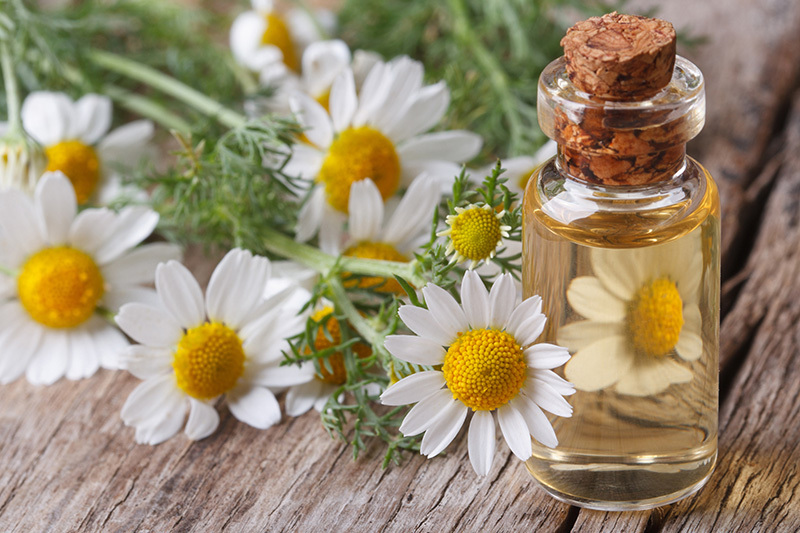Delve Into Nature: 8 Intriguing Facts About Sunflowers
Posted on 21/08/2025
Delve Into Nature: 8 Intriguing Facts About Sunflowers
Sunflowers, with their vibrant yellow petals and towering stalks, have long captured the imagination of botanists, artists, and nature lovers worldwide. These striking blooms are more than just a beautiful sight in a summer field--they teem with surprising qualities and hidden stories that make them a marvel of the plant kingdom. In this article, we'll delve into nature and uncover 8 captivating sunflower facts. Whether you're a gardener, student, or sunflower enthusiast, understanding these fascinating aspects can deepen your appreciation of these sunny icons.
1. Sunflowers Track the Sun's Movement: The Phenomenon of Heliotropism
One of the most unique facts about sunflowers is their ability to follow the sun's movement across the sky--a process known as heliotropism. The term derives from the Greek words 'helios' (sun) and 'trope' (turning). This natural behavior is usually observed in young sunflower plants and offers both aesthetic and practical advantages.
- Young sunflowers face east at dawn, gradually turning west as the sun moves during the day.
- At night, the heads reset to face east again, ready for the next sunrise.
- Mature sunflowers typically remain facing east, as this orientation helps attract pollinators by warming up their blooms.
This amazing adaptability demonstrates the intricate connection between sunflowers and their environment. The phenomenon is powered by differential growth rates on either side of the stem, regulated by the plant hormone auxin. Heliotropism not only boosts growth but also maximizes photosynthesis, ensuring sunflowers remain vibrant and healthy.

2. More Than Meets the Eye: The Flower is Actually Thousands of Tiny Flowers
You might think each sunflower head is a single, large flower, but that's a common misconception. In reality, sunflowers contain hundreds to thousands of tiny individual flowers called florets. These florets are tightly arranged in a spiral pattern at the center, giving rise to seeds as they mature.
How Do Sunflowers Organize Their Florets?
- Florets are arranged according to the Fibonacci sequence--a mathematical pattern seen throughout nature.
- This spiral arrangement maximizes the number of seeds the plant can produce within the limited space.
- The outer "petals" are actually ray florets, which do not produce seeds but serve to attract pollinators.
These characteristics make sunflowers a fascinating study in both botany and mathematics, revealing how nature optimizes for beauty and functionality.
3. Global Significance: Sunflowers Across Cultures and History
Sunflowers have a rich history, with origins tracing back to North America over 4,500 years ago. Early Native American tribes cultivated sunflowers, utilizing every part of the plant for food, oil, dye, and medicine. With their migration and expansion, sunflowers gained worldwide popularity and became entwined with local customs and traditions.
Sunflowers in Art and Symbolism
- The famous Dutch painter, Vincent van Gogh, immortalized sunflowers in his vibrant series of floral compositions, symbolizing happiness and optimism.
- In some cultures, sunflowers signify loyalty, longevity, and adoration due to their sun-seeking nature.
- Ukrainian tradition holds the sunflower as a national symbol, representing peace and resilience.
From ancient rituals to modern-day festivals, sunflowers bridge humanity and nature, making them not just agricultural plants but tokens of inspiration and hope.
4. Edible Wonders: Seeds Packed With Nutrition
One of the most practical interesting facts about sunflowers is the nutritional value found within their seeds. Sunflower seeds are not only a popular snack but also a source of healthy fats, vitamins, and minerals.
- Sunflower seeds are rich in Vitamin E, a powerful antioxidant that helps protect bodily cells.
- They contain magnesium, selenium, and healthy fats that support cardiovascular health.
- These seeds can be eaten raw, roasted, or compressed for sunflower oil--a major culinary oil worldwide.
Including sunflower seeds in your diet can contribute to overall well-being, offering a crunchy and wholesome alternative to less nutritious snacks.
5. Towering Giants: Sunflowers Break Records
When it comes to size and stature, sunflowers can reach extraordinary heights. The average sunflower stands between 5 to 12 feet, but some varieties--particularly the Russian Giant--can grow much taller.
- The Guinness World Record for the tallest sunflower goes to a plant grown in Germany, measuring a staggering 30 feet 1 inch (9.17 meters) in 2014.
- Sunflowers can also grow impressively large flower heads, sometimes measuring up to 24 inches (over 60 centimeters) in diameter.
These towering giants not only impress passersby in gardens and agricultural fields but also serve as striking examples of nature's potential for growth and adaptation.
6. Pollinator Magnets: The Environmental Importance of Sunflowers
Sunflowers play a crucial environmental role by acting as natural pollinator magnets. The flower's broad, brightly colored face and abundance of nectar attract a variety of pollinators, including bees, butterflies, and birds.
- Sunflowers help sustain bee populations, which are vital for pollinating many types of crops worldwide.
- The seeds produced feed countless birds and small mammals, supporting local ecosystems.
By growing sunflowers, gardeners and farmers can help support biodiversity and protect vulnerable pollinator species. Planting sunflowers is a simple yet powerful way to foster a healthy environment.
7. Remediation Powers: Sunflowers and Environmental Cleanup
One of the most remarkable sunflower facts is their use in environmental cleanup--a process called phytoremediation. Sunflowers have been planted around areas contaminated by radiation and heavy metals, including the sites of the Chernobyl and Fukushima nuclear disasters.
- The plant's roots absorb toxic substances from the soil, such as lead, arsenic, and radioactive elements.
- By removing these hazardous chemicals, sunflowers help restore the health of polluted environments.
- The technique is eco-friendly, cost-effective, and visually appealing due to the sunflower's beauty.
Sunflowers serve as a shining example of how nature can be harnessed for healing, showcasing their value beyond aesthetics or agriculture.

8. Versatile Beauty: A Diverse World of Sunflower Varieties
The world of sunflowers isn't limited to the familiar yellow blooms. In fact, there are nearly 70 recognized sunflower species (Helianthus genus), each with unique appearances, sizes, and growing habits.
Popular Types of Sunflowers
- Common Sunflower (Helianthus annuus): The classic, tall garden sunflower with a broad golden face.
- Dwarf Sunflowers: Compact varieties ideal for pots and small spaces--some grow as short as 12 inches.
- Red Sunflowers: Vibrant varieties like 'Moulin Rouge' and 'Chianti' boast deep ruby petals.
- Multi-headed Sunflowers: Types that produce several blooms per stem, providing more color and habitat for pollinators.
Thanks to selective breeding, sunflowers can be found in a dazzling range of colors--from creamy whites and bronze to mahogany red and orange. Whether used as cut flowers, landscaping features, or crop plants, sunflowers brighten the world with their versatile beauty.
Conclusion: Sunflowers--Nature's Fascinating Marvels
From their sun-tracking behavior to their role in environmental cleanup, sunflowers are packed with stories of resilience, utility, and wonder. These intriguing facts about sunflowers reveal just how special this iconic flower really is. Whether you're admiring a towering stalk in your backyard or enjoying a handful of seeds as a snack, remember: sunflowers are so much more than meets the eye.
Delve into the world of sunflowers--grow them, study them, or simply revel in their beauty--and discover nature's remarkable ingenuity shining through in every petal and seed.
- Related: The benefits of sunflowers in your garden include pest control and soil enrichment.
- Interested readers can explore more sunflower facts for kids and educational activities involving this cheerful flower.
- For sunflower growers: tips for maximizing sunflower seed yield and choosing unique sunflower varieties are widely available.
Let these 8 intriguing facts about sunflowers inspire you to delve further into the wonders of nature, cultivating not just plants, but curiosity, hope, and environmental stewardship.







